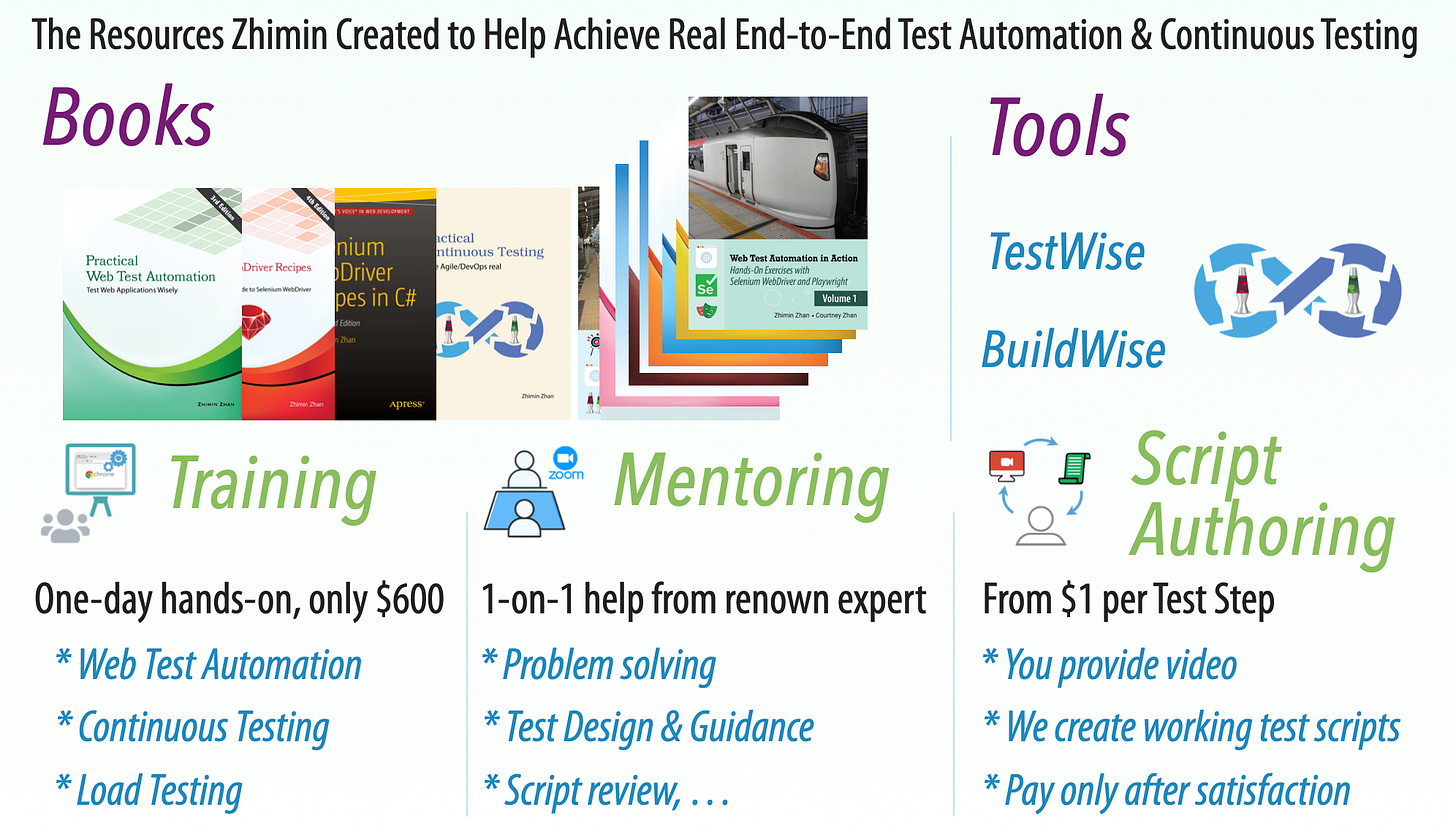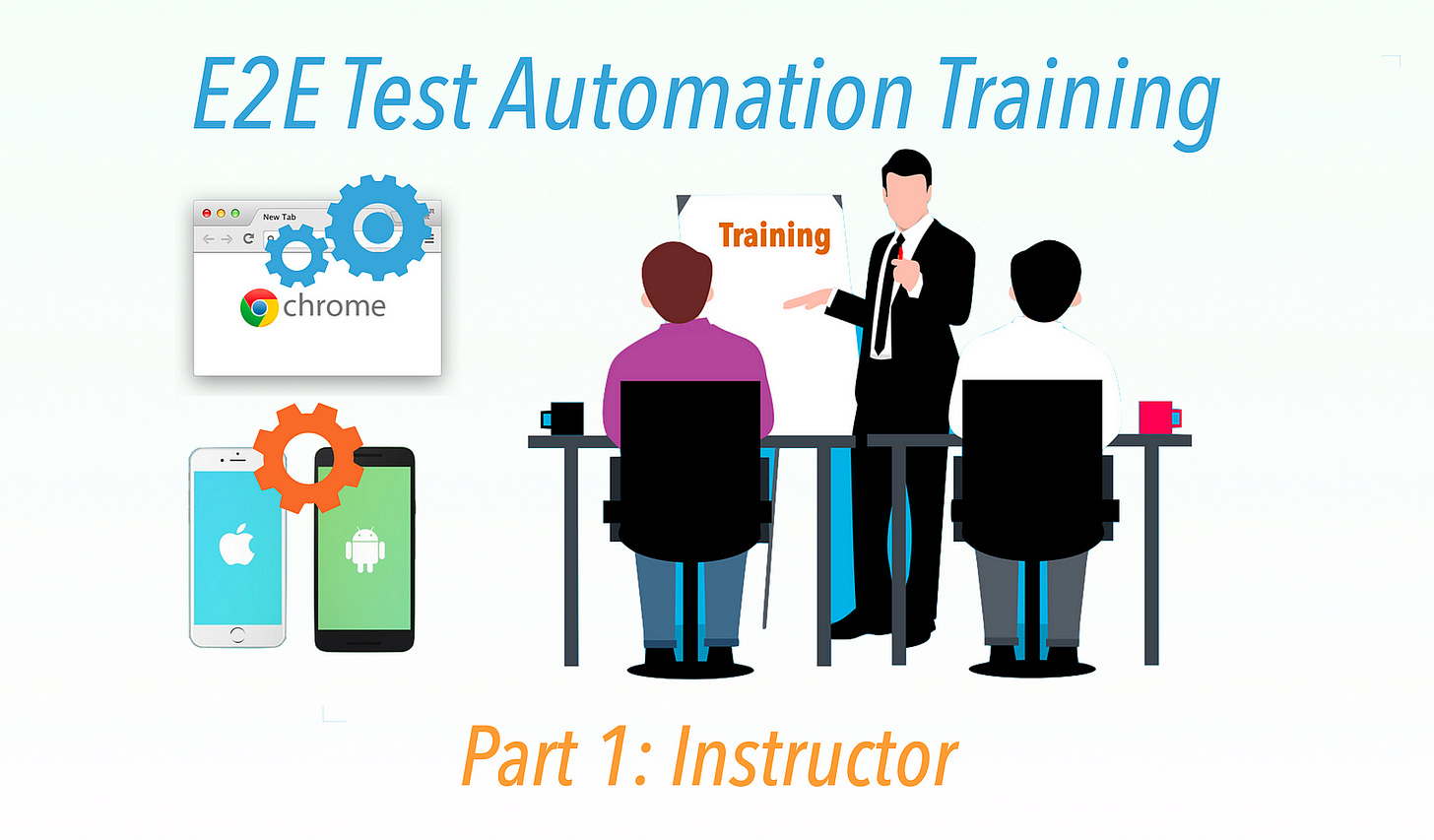Software Side Hustler Tip: My “Hit Two Birds With One Stone” Secret — Excel both day job and side projects. Part 4: Advice
Ask your current employer to invest in a high-quality one-day end-to-end test automation training—not just for the team’s benefit, but also to boost your own side app development.
In this article series:
Part 1: The Approach
Part 2: Why It Works?
Part 3: How Apply it? *
Part 4: Advice
Part 5: FAQ (upcoming)
For readers who have read the last three parts, I guess the No.1 question is that “The approach sounds good and practical, however, I don’t have the E2E test automation skills”.
My answer is old-school: “Learn it”. I did in 2005, when I was in my thirties and a senior Java developer (contractor).
You may have come across the resources (books, tools, articles and training) I’ve created over the past 20 years. Honestly, to learn and master E2E test automation, money isn’t the issue at all. This newsletter features approximately 300 free articles, plus an additional 300+ for premium members. My books start at just $10, and I offer a 30-minute one-on-one coaching session (once for a person) for only $1.
So, it really comes down to your motivation and how important you believe end-to-end (E2E) test automation is to the success of your side app. For me, E2E test automation is the top priority. It accounts for about 70% of the software development life cycle and is what makes daily production releases possible.
The most effective way to learn E2E Test automation is via Training followed by as-needed coaching.
These days, most software professionals seem reluctant to invest in their own professional growth—which is quite unfortunate. (I can tell you, it wasn’t like this over two decades ago.)
But from another angle, those who do invest the time and effort to learn and master real end-to-end (E2E) test automation will gain a significant edge over their peers.
Advice: Get Your Company to Engage a Test Automation Coach
Here’s a practical suggestion: Persuade your manager to arrange an E2E test automation training session. If you’ve got decent interpersonal skills, it shouldn’t be too hard to make that happen. (Why? Because companies typically allocate a budget for staff training.)
Now, from the company’s perspective, software developers may not feel especially motivated to do this (getting an E2E test automation training). But do it for your side hustle (as well as for your current employer). Yes, you’re taking advantage of the company’s resources, but it directly benefits your current day work, too. That makes it perfectly ethical.
After all, all training is meant to enhance employee skills—not necessarily to be strictly job-specific. For example, I once received training in public speaking and technical writing when I was a permanent employee over 20 years ago.
Once you've decided to take the leap, the first step is to select one or two suitable training providers. Management often has little idea where to start, and a common pitfall is turning to so-called 'Agile consulting' firms that offer little real value. YOU need to select a good one, again, for your own sake. You might find this “Why Are Most E2E Test Automation Training Not Effective?” article series useful.
Tip 1: You don’t need to limit yourself to local training providers.
Go for global experts, with video conferencing tools such as Zoom, it is feasible.
Remember, E2E test automation is super practical and universally applicable.
Tip 2: Team up with your buddy
To improve the chances of getting your current employer to support test automation training, it's helpful to find an ally within the company. Also, Senior software developers generally know little about test automation and often pretend they do (otherwise your company shall be doing E2E test automation, right?), with repeatedly trying some hyped frameworks and tools. By finding an ally, you’ll have a better chance of steering the team toward proven solutions, like using 👍 WebDriver instead of 👎 Cypress and choosing a good scripting language like 👍 Ruby over 👎 C#.
Tip 3: Start with just Training, a one-day training
There are two key considerations: time and money. While the budget at this small scale is usually less of a concern for managers, having a group of engineers taken away from their regular work is far more worrisome. Most test automation training offered by so-called “Agile” consultancies lasts two to three days.
Some might wonder, “Is one training session (like mine, only one day) enough?”. The answer is yes. A well-designed, practical and interactive one-day session led by an experienced test automation coach is more than enough to get beginners started with automating tasks that are immediately useful in their work.
Tip 4: Verify the training content and instructor
It’s basic due diligence—just like presenting any proposal to your manager. Take a bit of time to prepare. If possible, reach out to the instructor for a quick demo, ideally showcasing real automated tests on your app.
Check out this article, “Why Are Most E2E Test Automation Training Not Effective? Part 1: Unqualified Instructor, often not even a Dedicated One”.
Related reading:






